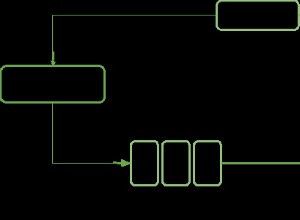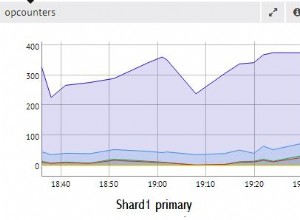Istnieje tylko jeden typ liczbowy
w JavaScript (Number ), który jest reprezentowany w postaci binarnej jako liczba zmiennoprzecinkowa IEEE 754 (podwójna).
W specyfikacji BSON będzie to reprezentowane jako podwójne (typ 1), więc powinieneś być w stanie znaleźć za pomocą:
db.people.find({name: { $type: 1 }})
Jest trochę mongo pomocników powłoki, jeśli chcesz wstawić różne BSON typy danych
:
42 // Type 1: double (64-bit IEEE 754 floating point, 8 bytes)
NumberInt(42) // Type 16: int32 (32-bit signed integer, 4 bytes)
NumberLong(42) // Type 18: int64 (64-bit signed integer, 8 bytes)
Na przykład:
db.people.insert({ name: 'default', num: 42 })
db.people.insert({ name: 'NumberLong', num: NumberLong(42) })
db.people.insert({ name: 'NumberInt', num: NumberInt(42) })
Różne reprezentacje liczbowe będą nadal pasować, jeśli wykonasz find() na liczbie, która może być reprezentowana w wielu formatach (tj. 32-bitowa liczba całkowita może być również reprezentowana jako double lub int64).
Na przykład:
db.people.find({num:42})
{
"_id" : ObjectId("50965aa3038d8c8e85fd3f45"),
"name" : "default",
"num" : 42
}
{
"_id" : ObjectId("50965aa3038d8c8e85fd3f46"),
"name" : "NumberLong",
"num" : NumberLong(42)
}
{
"_id" : ObjectId("50965aa3038d8c8e85fd3f47"),
"name" : "NumberInt",
"num" : 42
}
Jeśli jednak znajdziesz według $type , reprezentacja BSON jest inna:
> db.people.find({num: { $type: 1 }})
{
"_id" : ObjectId("50965aa3038d8c8e85fd3f45"),
"name" : "default",
"num" : 42
}
> db.people.find({num: { $type: 16 }})
{
"_id" : ObjectId("50965aa3038d8c8e85fd3f47"),
"name" : "NumberInt",
"num" : 42
}
> db.people.find({num: { $type: 18 }})
{
"_id" : ObjectId("50965aa3038d8c8e85fd3f46"),
"name" : "NumberLong",
"num" : NumberLong(42)
}




